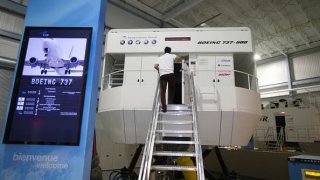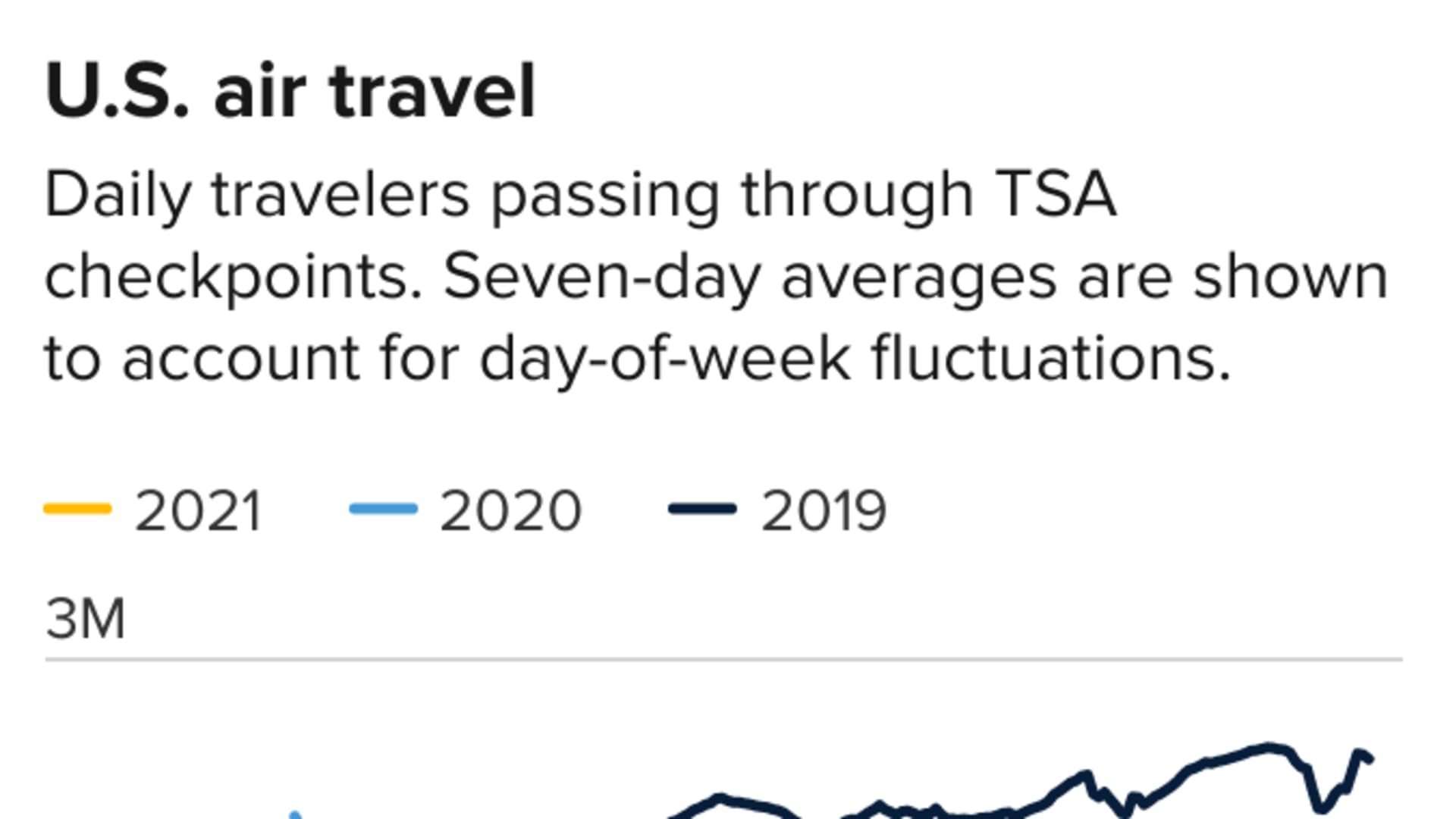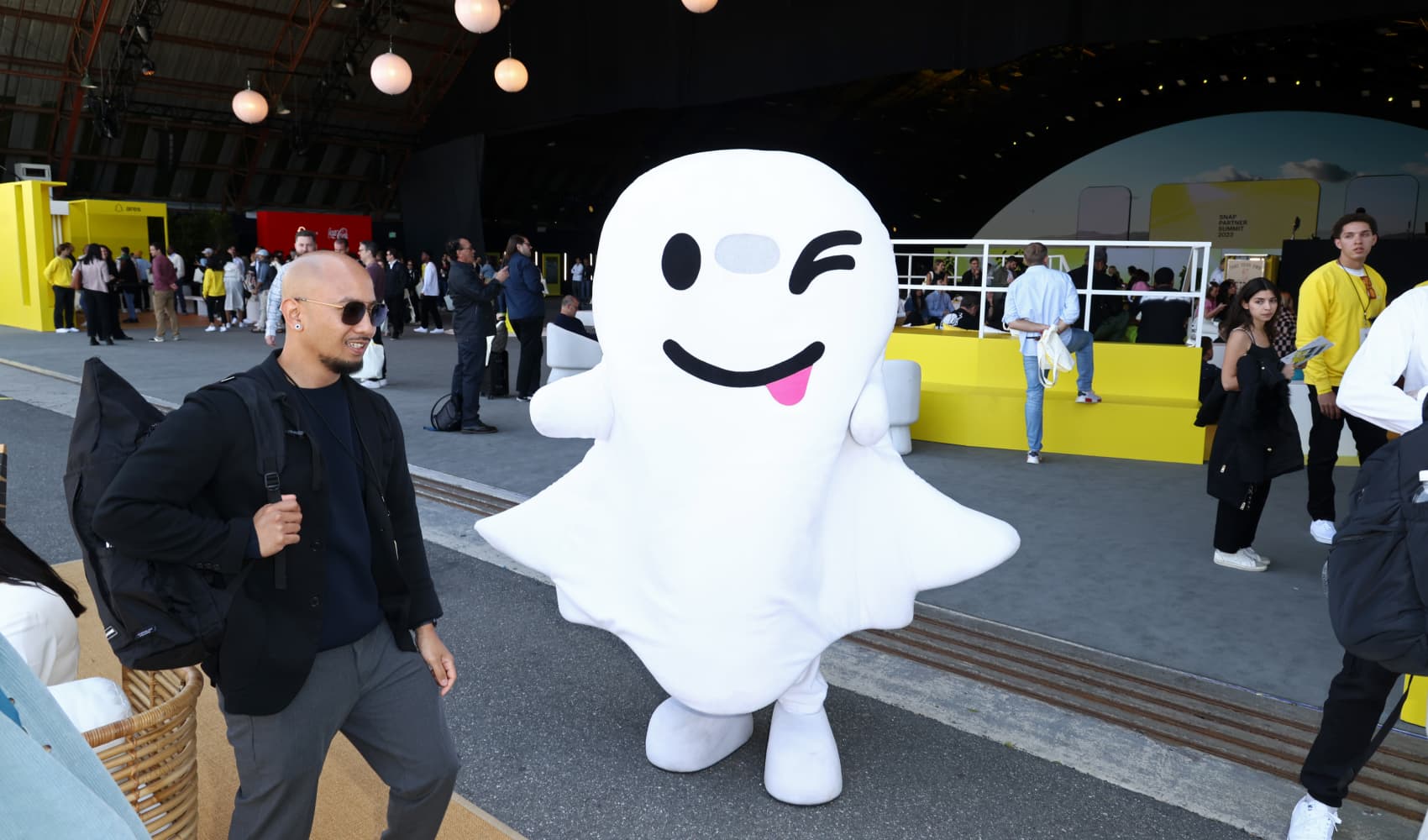
- Airlines’ pilot training needs surged after they parked hundreds of planes and idled pilots or encouraged them to retire early.
- A shortage of trained pilots leaves little margin for error when there are storms or other operational challenges.
- Airlines are hiring pilots and for other positions.
Some of airlines' most in-demand flights this summer don't even leave the ground.
Flight simulators from Atlanta to Dallas to Miami and elsewhere are humming as airlines scramble to get hundreds of pilots trained to meet a surge in bookings that kicked off this spring as vaccinations rolled out and Covid-era restrictions eased.
Domestic leisure travel has recovered to 2019 levels, while business travel is also rebounding, airline executives said this month.
We're making it easier for you to find stories that matter with our new newsletter — The 4Front. Sign up here and get news that is important for you to your inbox.
Airlines have received $54 billion in federal aid since March 2020 in exchange for not laying off workers. But voluntary departures, changed fleets and the rapid rise in travel demand have created a need for pilot training that industry experts say is without parallel. Reduced flight schedules also meant pilots weren't getting in their minimum takeoffs and landings required to maintain their flying status. Training pilots on new aircraft can take weeks while annual retraining can take a few days.
"What is unique about this experience is the drop-off in business [early in the pandemic] was an existential threat to the business," said Bryan Terry, managing director and global aviation leader at Deloitte. "Then what came, the unexpected part, the return to travel came faster than expected."
That "puts a very tight timeline" on the pilot training, he added.
Money Report
Airline executives urged pilots and other employees to take early retirement and leaves of absence at reduced pay to cut expenses. They parked hundreds of jets, retiring some planes altogether.
David Johnson, an American Airlines Airbus A320 first officer, was briefly furloughed in between two federal airline aid packages in the fall. While he was recalled after the next round of federal support in December, his five-day training session was set for more than five months later, meaning pilots don't immediately return to the line.
Getting enough pilots through training that can become lengthy as they change aircraft, will help determine how well airlines respond to the demand recovery. Thunderstorms and staffing shortages have complicated operations at Southwest Airlines and American Airlines, and other carriers this summer. Not having enough pilots ready to fly means airlines have less backup.
"They came into the summer with very little margin," Casey Murray, president of the Southwest Airlines Pilots Association, which represents the airline's aviators, said of the Dallas-based carrier.
Southwest, which said recently that it is flying almost as much as it did in the summer of 2019, more than other airlines, suffered hundreds of cancellations and delays in mid-June and early July, sparked by bad weather and technology problems.
Southwest has some 500 first officers still out on temporary leave, the company said. The union said the roughly 900 pilots who were called back from leave early exceed training capacity.
Pilot training begins at 5:30 a.m. on most days and ends by 11 p.m., a spokesman said. The carrier is in the process of hiring check pilots, who evaluate line pilots, as well as flight instructors, he added.
American Airlines, which has also ramped up flying more than competitors United Airlines and Delta Air Lines, had expected to complete pilot training by the end of the summer, according to a company memo from April. But the airline moved that up so most pilots could complete training by the end of June, partially by adding training capacity, to cater to the robust summer schedule, according to people familiar with the matter.
More than 90% of American's Boeing 737 pilots have been trained on the 737 Max, the plane that regulators cleared to fly again after two fatal crashes, a person familiar with the operation said. It opted to train the remaining roughly 10% on the Max once pilots completed their requalification training, the person said. The carrier flies both the Max and older 737s.

The airline also sought volunteers last month to temporarily fly from different pilot bases, including 777 pilots at Dallas/Fort Worth International Airport hub and New York's LaGuardia Airport.
"We always knew — we were praying — we'd have to step on the gas at some point," said Chip Long, American's vice president of flight operations. "We're doing that now and it feels really good."
Long said the airline is planning to hire more simulator pilots to handle training loads.
In a turning point in the pandemic, American welcomed back its first class of new pilots last week whose training was derailed by the virus in March 2020. Other airlines have also announced plans to resume hiring, which will keep instructors and simulators busy for months.
American recently trimmed its schedule through mid-July by about 1% or close to 1,000 flights, to avoid disruptions from staffing shortfalls or other issues.
Dennis Tajer, spokesman for the Allied Pilots Association, which represents the company's some 15,000 pilots, said the airline overextended itself when it first plotted out its late-spring and summer schedule.
"Mother Nature causes storms and management creates storms," he said.
Delta has been more cautious about adding flights this summer. The Atlanta-based carrier had a host of flight cancellations and delays over Thanksgiving and Christmas because of pilot shortages.
Because of a number of aircraft retirements, pilot buyouts and other issues, hundreds of Delta pilots have shifted to other aircraft or been promoted, according to the union. The airline will have close to some 700 first-time captains, a promotion that involves extra training.
"We want nothing less than for Delta to regain its perch as the industry leader, a position they held pre-Covid," said Chris Riggins, spokesman for the Delta chapter of the Air Line Pilots Association. "To assist with that, our pilots have contributed throughout the pandemic. Now, as we recover, we are aggressively volunteering for overtime flying at a pace that has set a string of new consecutive monthly records that go back to last November."
Pilots have also had record overtime for several months, the union said.
The airline said Wednesday that training and hiring to prepare for summer 2022 contributed to a 4 percentage point increase in its costs in the second quarter.
Delta is planning to hire 1,000 pilots over the next year and now the airline is mulling changing how it allows pilots to bid to fly certain aircraft to avoid training backups.
"One of the options we're reviewing is to create more frequent and smaller [advanced entitlement bids] to allow us to more easily manage the training schedule and conversion process," Bob Schmelzer, director of crew resources planning, analytics and reporting, wrote to pilots in a July 9 memo.
Delta declined to say whether it would have added more flights this summer if it had more trained pilots available.
United Airlines has escaped some of the issues that have hit other carriers. Like Delta, it has added less capacity back to the market. Its senior vice president of flight operations said an agreement with its pilots' union last year that kept many of its pilots trained and ready to fly will give the carrier a leg up over competitors.
"Thanks to [the agreement], we are in a great position to support United's bounce-back," Bryan Quigley said in a July 7 staff note. "I appreciate your continued focus on our operation – we have a great opportunity to win over our customers this summer and make United the airline of choice."






